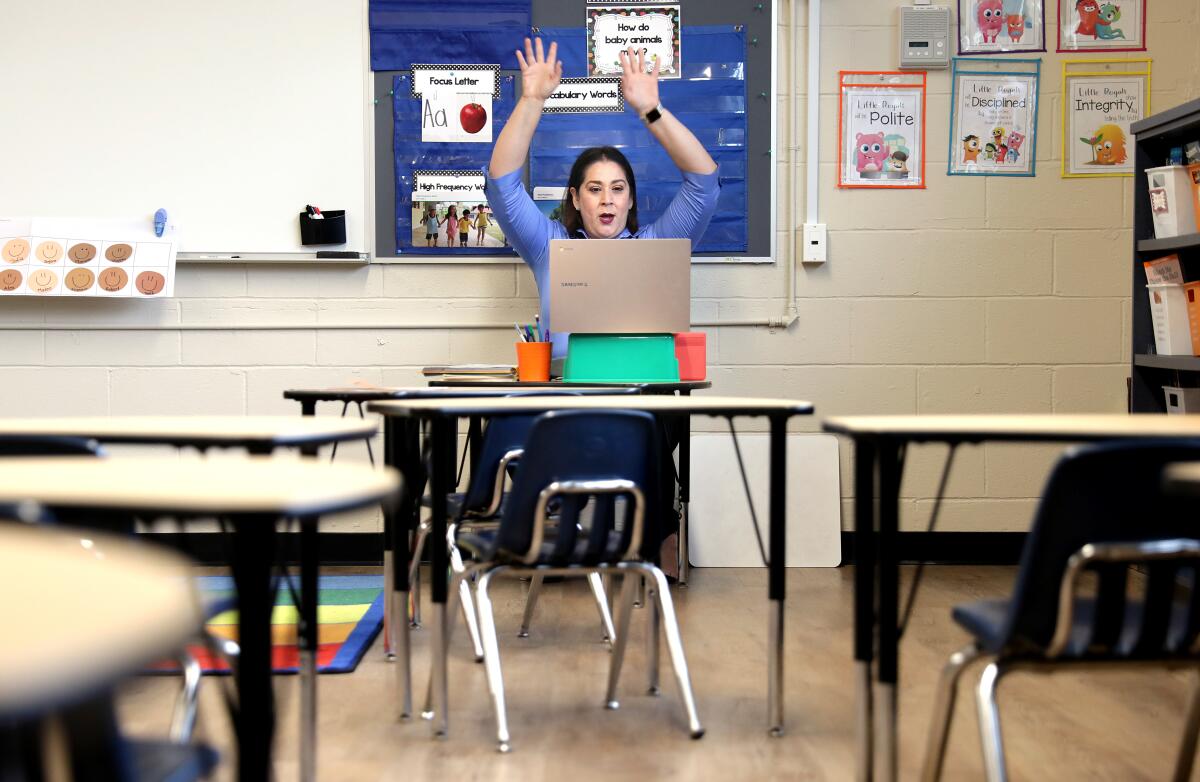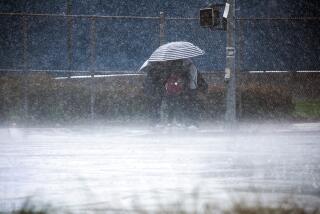Limited reopening of L.A. County elementary schools allowed if waivers are approved

A limited number of elementary schools will be able to apply for waivers to reopen transitional kindergarten through second-grade classrooms under a Los Angeles County Board of Supervisors decision Tuesday that gives priority to schools serving higher numbers of low-income families.
“As October approaches, it’s critical that we begin the process of reopening our schools at limited capacity,” said board Chair Kathryn Barger, who proposed the motion along with Supervisor Janice Hahn.
Los Angeles County officials, citing high local COVID-19 case rates, have held back on allowing elementary schools to apply for waivers to reopen, which are allowed under state guidelines. But some school leaders, particularly private school operators, have been urging the county to rethink its position.
The decision represents another step in the slow, incremental reopening of schools in the county. This month, officials began allowing schools to bring back small cohorts of special-needs students. A broader reopening, meanwhile, cannot happen until the county moves from the state’s purple tier, which indicates widespread coronavirus transmission, to a lower, less-restrictive tier and stays there for 14 days.
Los Angeles County officials have previously said that no campus in the county will be able to open to all K-12 students until November at the earliest.
Barger framed Tuesday’s motion as one meant to help address deep inequities in distance learning that disproportionately affect the education of low-income and Black and Latino students. Educators have also said that distance learning forced by coronavirus school campus closures is particularly difficult for the youngest elementary school children.
“The state, county and school districts have invested heavily in distance learning technology. However, gaps still exist that disproportionately impact minority communities,” Barger said. “All students are entitled to a free and appropriate education. For many of our students most at risk, distance learning is neither free nor appropriate.”
Under the motion approved unanimously by the Board of Supervisors, the county will implement the waiver program “starting at 30 schools per week” with priority given to schools with higher percentages of students who qualified for free or reduced-priced lunch and “equally divided among the five supervisorial districts.”
It remains unclear, under the latest rules, which types of schools will ultimately apply to reopen.
Los Angeles Unified spokeswoman Shannon Haber declined to answer questions about whether the nation’s second-largest school district would pursue waivers for any of its schools.
“Los Angeles Unified continues to work on plans for students to return to schools as soon as it’s safe and appropriate to do so,” Haber said.
Officials with the teachers union said that it remains unsafe for LAUSD to reopen schools.
“We know some of our most vulnerable students — our younger students, those with special needs and English language learners — are more acutely impacted by remote learning challenges. But we also know that it is those same students’ communities — predominantly communities of color living in poverty — that are most acutely impacted by this deadly virus,” UTLA President Cecily Myart-Cruz said in a statement. “It is not easy for educators to see any student struggling. But we must let science and these realities guide our actions.”
State guidelines require schools seeking waivers to consult with labor, parent and community organizations.
So far across the state, the waiver process has been largely dominated by private schools — California has approved more than 600 waivers since August and the nonprofit newsroom Cal Matters recently reported that more than 500 had gone to private schools.
Schools in many low-income communities, which have been especially hard hit by the coronavirus, may also decide they cannot safely reopen. In counties that have been allowed to open schools, district leaders in some low-income majority-Latino neighborhoods with higher coronavirus rates have said it’s still unsafe to do so, even as their neighbors in more affluent communities with lower case rates open their doors.
The county supervisors’ decision was greeted with mixed emotions by some of the school leaders who had pushed the county to allow waivers. This week, a coalition of private schools called on supervisors and public health officials to begin accepting waiver applications in which schools must demonstrate they have strict safety measures in place. The Palos Verdes Peninsula Unified School District had also urged the county to begin accepting the applications.
Palos Verdes Peninsula Unified Supt. Alex Cherniss said he was disappointed that waivers would be limited to 30 a week and give priority to schools with more low-income families.
Last school year, only 7.9% of Palos Verdes district students qualified for free and reduced lunch.
“What is maybe most disappointing for me is that all kids matter and for the county to put a priority on socioeconomics is disappointing,” Cherniss said. “This just puts us at the end of the line.”
Tom Konjoyan, head of school at Village Christian, who signed the letter calling on the county to open the waiver process, said he was unsure how his school would quantify its low-income student population.
The school charges $10,980 to $15,580 per student, depending on the grade level. Konjoyan said many of his families receive financial aid and some are lower-income, but the school does not offer a free-and-reduced lunch program.
But Los Angeles Roman Catholic Archdiocese Supt. Paul Escala, who also signed the letter, called the decision “progress.”
“We’re grateful that the Board of Supervisors has really responded to what parents and educators have been saying, which is allow us to let some students back into the classroom,” Escala said. “Children in the lower grades are simply dropping out, and parents have already been removing them from school because distance learning doesn’t work for everyone.”
Escala said he was confident that the district’s schools would be able to comply with the waiver application rules.
County Office of Education spokeswoman Margo Minecki, meanwhile, said officials there are still learning about how the waiver process will work.
“Our districts will likely have a lot of questions about how this will be implemented,” she said. “We look forward to learning more from County Public Health and sharing that information with districts. “
Though case rates in L.A. County have shown positive signs recently, the county remains in the state’s most-restrictive purple tier, officials said.
“We’re a very large county and the cautious approach I think at this point has been beneficial,” said L.A. County Public Health Director Barbara Ferrer.
Still, Ferrer noted that she had heard from parents and educators who wanted the county to consider accepting waivers.
“I know that on my calls with educators and parents there have been questions raised about is there a possibility for us to reconsider,” she said.
Times staff writer Jaclyn Cosgrove contributed to this report.
More to Read
Sign up for Essential California
The most important California stories and recommendations in your inbox every morning.
You may occasionally receive promotional content from the Los Angeles Times.












